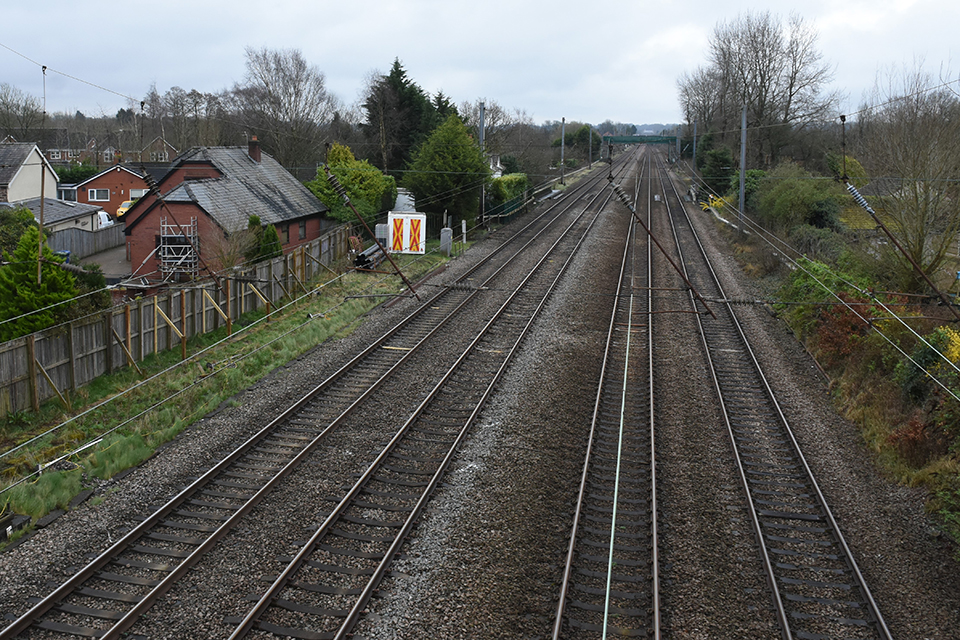The Rail Accident Investigation Branch (RAIB), which reports to the Department for Transport, independently investigates accidents and disseminates its findings to improve railway safety.
At around 2:15pm on 14th March the driver of an Avanti West Coast train travelling from Glasgow to London Euston reported a near miss with a track worker near to Euxton Junction on the West Coast Main Line. The track worker involved was a controller of site safety (COSS) who, at the time of the incident, had been looking for a lineside location cabinet (LOC) to undertake scheduled maintenance work.
The COSS was alerted to the approaching train, which was travelling at 110 mph, by a shouted warning from a member of the public on a nearby footbridge and by the train driver sounding the train’s warning horn. The COSS managed to move to a position of safety approximately two seconds before the train reached his location.
The RAIB report found that the near miss happened because the COSS had misidentified which of the railway lines at the location had been closed to trains (known as a line blockage). Although signage at one of the access points used by the team correctly showed the layout of the track, the COSS did not recognise the error. The error was also not challenged by the other member of the team during a briefing given by the COSS.


The site of the incident was close to Euxton Junction, south of Preston. There are four railway lines at this point. The lines relevant to this incident are designated as the Up Fast and the Down Fast. The other two lines are designated as the Up Slow and the Down Slow.
The COSS had been sent a safe system of work (SSOW) as part of a safe work package (SWP) but had already started their shift before it arrived. This contravenes Network Rail safety standard NR/L2/OHS/019 ‘Safety of people at work on or near the line’ which states that “once the person in charge has reviewed the SWP, they shall verify the SWP at least a shift in advance”.
This pack contained details of three SSOWs which were to be used as part of the work. These included a separated system of work which, at the incident location, would have required the team to keep at least two metres between the site of work and the nearest running rail of the adjacent open line. The SWP also included one planned line blockage for the ‘up fast’ line, and a second for the ‘down fast’ line to allow other items of work to take place closer to the lines concerned.
The team received a work order requiring them to conduct two separate items of maintenance work: testing within a LOC, and a track circuit inspection, both of which were in the same area.
The COSS and the other team members are locally based and familiar with the area where the incident took place. However, the COSS could not recall previously going to the specified LOC and was unaware of its precise location.
For this reason, the COSS checked the location of the LOC before leaving the depot. However, in doing so, the COSS identified a different LOC with the same identifying number. This was located on an adjacent section of the line next to the Down Fast line, whereas the LOC to be worked on was located next to the Up Fast line.
Based on this, the COSS departed the depot with an incorrect understanding that the LOC on which the work was to be carried out was located next to the Down Fast line.

